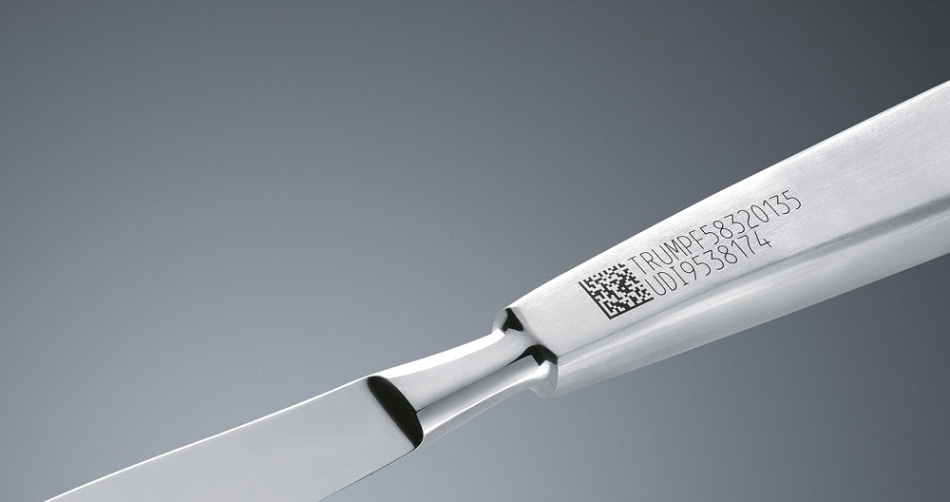Laser specialist, TRUMPF, has a laser beam source for every manufacturing application in medical engineering but at Medical Technology Ireland 2018, the company will highlight its new laser and software module for UDI marking, specially designed to create corrosion-resistant marks on highly reflective materials using ultra-short pulsed lasers. A unique device identifier (UDI) is now essential for all medical device manufacturers wishing to trade with the US as it allows the product to be tracked through the entire supply chain.

The UDI – often applied in the form of a linear bar code or 2D data matrix code – combines static and dynamic identifiers. The static portion is a unique, dedicated code for the specific medical device, while the dynamic portion changes for each batch of products. There are currently three accredited UDI labeling standards: GS1, HIBC and ISBT 28.
Based on the TRUMPF TruTops Mark marking software, the new turnkey laser system creates standard-compliant UDIs from company and production data in any of the three identification systems the user chooses. The whole process also functions in reverse, with the optional VisionLine Mark image processing module enabling the TRUMPF software to quickly scan and read UDIs on medical devices.
Thanks to its broad product range TRUMPF can provide, as part of this marking system, the right laser for any type of material, from stainless steel and aluminum to plastics and organic materials. The new TruMicro Mark 2000 is, however, a particularly good choice for the medical device sector.
It offers an ultra-short pulsed laser with extremely short 0.4- to 20-picosecond laser pulses and high pulse energies of up to 20 microjoules. It produces completely corrosion-resistant marks that maintain their high contrast appearance even after repeated cleaning and sterilization.
The pulses emitted by the TruMicro Mark 2000 are short enough to enable cold material processing. This means the time taken to absorb the laser energy is shorter than the time required to heat up the surrounding material, so the marking of the material is completed before thermal processes can take effect.
To mark the medical device, the high pulse peak powers of the TruMicro Mark 2000 initially produce a nanostructure on the device’s surface. This rough surface creates a light trap that significantly reduces the diffuse scattering of the light, causing the mark to take on a permanent dark black hue.
A big advantage of this method is that it allows the protective chromium oxide layer of the steel to re-form after processing, preventing the onset of corrosion.